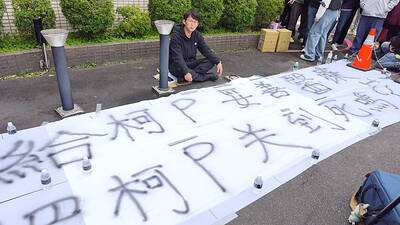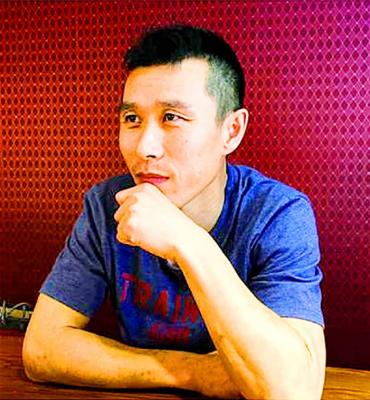The ancestors of today's Polynesians originated in Taiwan around 5,200 years ago, spreading into the Philippines and eastward into the Pacific, according to a study of the region's languages that backs up the findings of other similar studies.
Scientists at Auckland University used computers to analyze the vocabulary of 400 Austronesian languages from Southeast Asia and the Pacific as part of their research into how the Pacific was settled.
The Austronesian language family is one of the largest in the world, including 1,200 languages spread across the Pacific region, professor Russell Gray said yesterday.
“By studying the basic vocabulary from these languages, such as words for animals, simple verbs, colors and numbers, we can trace how these languages evolved,” Gray said.
“The relationships between these languages give us a detailed history of Pacific settlement,” Gray said.
The results, published in the latest issue of the journal Science, show how migration from Taiwan paused for long periods.
Before entering the Philippines, the Austronesians paused in Southeast Asia for around a thousand years and then spread across the region from the Philippines to Polynesia in less than a thousand years.
After settling in Fiji, Samoa and Tonga, the Austronesians stopped for another thousand years before spreading further into Polynesia and eventually reaching New Zealand, Hawaii and Easter Island.
New Zealand was believed to have been settled by the Maori about 700 to 800 years ago.
Research fellow Simon Greenhill said that the stages of the expansion could be linked with new technology, such as better voyaging canoes.
“Using these new technologies, the Austronesians and Polynesians were able to rapidly spread through the Pacific in one of the greatest human migrations ever,” he said.
Other archeological and DNA research has supported the theory that Polynesians are linked to Taiwan's Aborigines.

The High Prosecutors’ Office yesterday withdrew an appeal against the acquittal of a former bank manager 22 years after his death, marking Taiwan’s first instance of prosecutors rendering posthumous justice to a wrongfully convicted defendant. Chu Ching-en (諸慶恩) — formerly a manager at the Taipei branch of BNP Paribas — was in 1999 accused by Weng Mao-chung (翁茂鍾), then-president of Chia Her Industrial Co, of forging a request for a fixed deposit of US$10 million by I-Hwa Industrial Co, a subsidiary of Chia Her, which was used as collateral. Chu was ruled not guilty in the first trial, but was found guilty

DEADLOCK: As the commission is unable to forum a quorum to review license renewal applications, the channel operators are not at fault and can air past their license date The National Communications Commission (NCC) yesterday said that the Public Television Service (PTS) and 36 other television and radio broadcasters could continue airing, despite the commission’s inability to meet a quorum to review their license renewal applications. The licenses of PTS and the other channels are set to expire between this month and June. The National Communications Commission Organization Act (國家通訊傳播委員會組織法) stipulates that the commission must meet the mandated quorum of four to hold a valid meeting. The seven-member commission currently has only three commissioners. “We have informed the channel operators of the progress we have made in reviewing their license renewal applications, and

Taiwan People’s Party (TPP) Chairman Huang Kuo-chang (黃國昌) yesterday appealed to the authorities to release former Taipei mayor Ko Wen-je (柯文哲) from pretrial detention amid conflicting reports about his health. The TPP at a news conference on Thursday said that Ko should be released to a hospital for treatment, adding that he has blood in his urine and had spells of pain and nausea followed by vomiting over the past three months. Hsieh Yen-yau (謝炎堯), a retired professor of internal medicine and Ko’s former teacher, said that Ko’s symptoms aligned with gallstones, kidney inflammation and potentially dangerous heart conditions. Ko, charged with

Taiwan-based publisher Li Yanhe (李延賀) has been sentenced to three years in prison, fined 50,000 yuan (US$6,890) in personal assets and deprived political rights for one year for “inciting secession” in China, China's Taiwan Affairs Office spokesman Chen Binhua (陳斌華) said today. The Shanghai First Intermediate People’s Court announced the verdict on Feb. 17, Chen said. The trial was conducted lawfully, and in an open and fair manner, he said, adding that the verdict has since come into legal effect. The defendant reportedly admitted guilt and would appeal within the statutory appeal period, he said, adding that the defendant and his family have